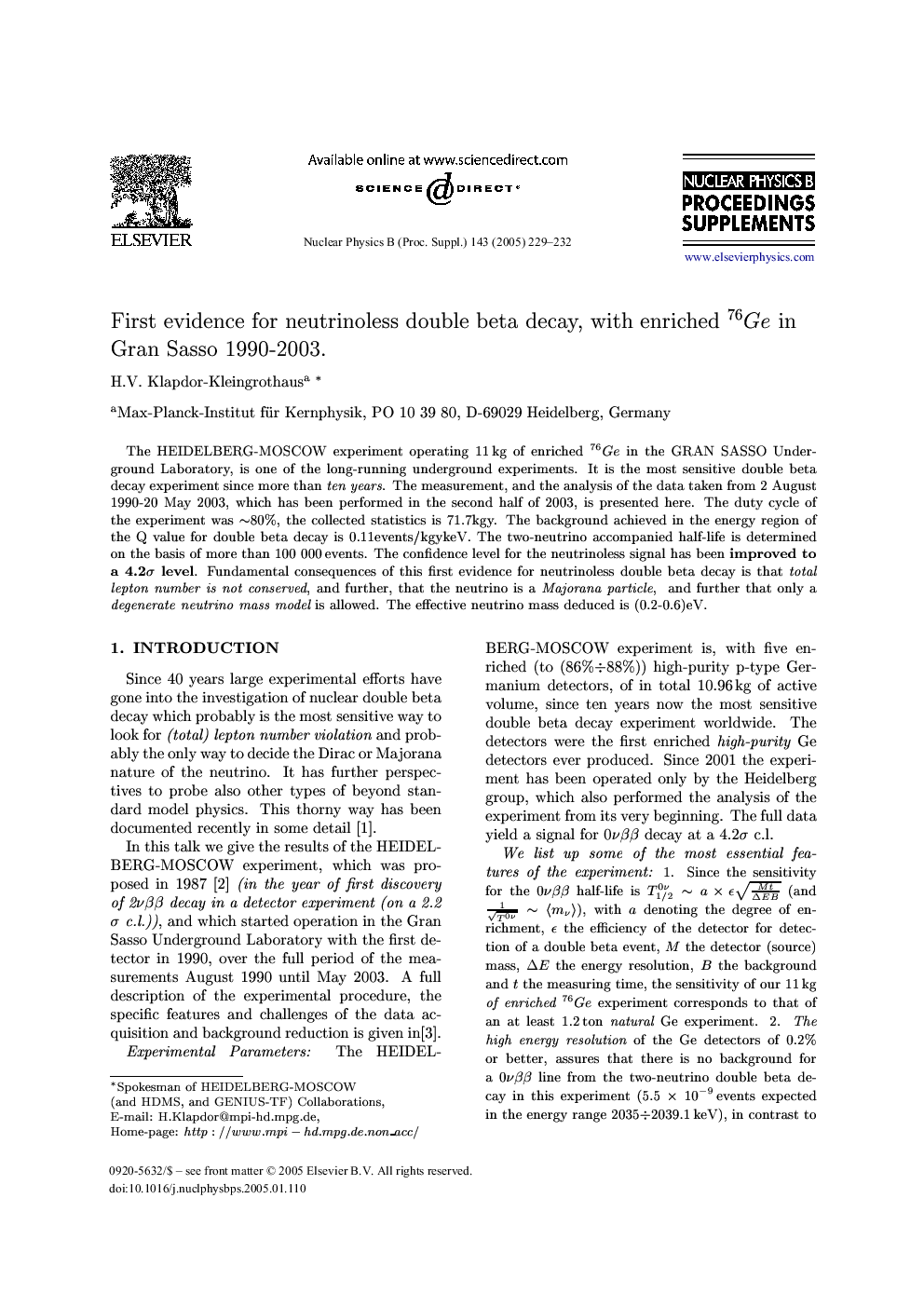| Article ID | Journal | Published Year | Pages | File Type |
|---|---|---|---|---|
| 9857486 | Nuclear Physics B - Proceedings Supplements | 2005 | 4 Pages |
Abstract
The HEIDELBERG-MOSCOW experiment operating 11 kg of enriched 76Ge in the GRAN SASSO Underground Laboratory, is one of the long-running underground experiments. It is the most sensitive double beta decay experiment since more than ten years. The measurement, and the analysis of the data taken from 2 August 1990-20 May 2003, which has been performed in the second half of 2003, is presented here. The duty cycle of the experiment was â¼80%, the collected statistics is 71.7kgy. The background achieved in the energy region of the Q value for double beta decay is O.11events/kgykeV. The two-neutrino accompanied half-life is determined on the basis of more than 100 000 events. The confidence level for the neutrinoless signal has been improved to a4.2Ïlevel. Fundamental consequences of this first evidence for neutrinoless double beta decay is that total lepton number is not conserved, and further, that the neutrino is a Majorana particle, and further that only a degenerate neutrino mass model is allowed. The effective neutrino mass deduced is (0.2-0.6)eV.
Related Topics
Physical Sciences and Engineering
Physics and Astronomy
Nuclear and High Energy Physics
Authors
H.V. Klapdor-Kleingrothaus,
